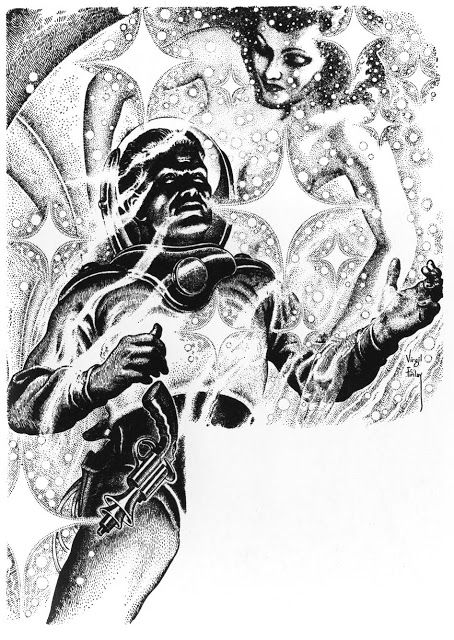 This fascinating new site aims to test the last year’s claims about kids these days being unable to get excited about classic science fiction. Here’s the deal:
This fascinating new site aims to test the last year’s claims about kids these days being unable to get excited about classic science fiction. Here’s the deal:
I’ve rounded up a pool of younger people who have agreed to let me expose them to classic works of science fiction and assembled a list of older works I think still have merit. Each month my subjects will read and react to those stories; I will then post the results to this site. Hilarity will doubtless ensue!
I look forward to seeing how this plays out!
Adam-Troy Castro’s comments which inspired this project deserve a brief response. Here’s mine:
Asimov, Heinlein, and Clarke do not define the field. They are not representative of the field. They were not the best, either. Making them out as being the exemplars of “classic science fiction” is just plain strange. I know everybody does it, but it’s the result of people repeating this “big three” nonsense without giving the matter any thought.
The main problem with it is that it arbitrarily excludes Weird Fiction and Planetary Romance from the definition of science fiction. Edgar Rice Burroughs is the real giant of 20th century science fiction. H. P. Lovecraft’s incomparable Mythos stories include more than a few that are straight ahead science fiction tales. The kind of variety involved in pulling in those two guys matters, too. Different people like different things, after all. You just can’t know in advance what’s going to “set someone’s heart afire,” so moving beyond the assumptions of “big three” thinking is essential if you actually want to make some kind of connection.
Adam-Troy mentions that people are liable to be horrified by some of Heinlein’s attitudes. The thing about that is that young people have to be trained to object to that sort of thing. Most of them have no problem with the old books until they graduate college, when they suddenly realize just how offensive the novels they loved as a child have been made to them. You know what’s actually horrifying, though? All the graphic material glommed onto science fiction works starting in the seventies when authors and publishers fell all over themselves to show off how “mature” they were. The older works were written to a standard that was meant to appeal to much broader audience. They still do.
Interesting! I agree wholeheartedly that those three do not define the field (though I am a big fan of the Foundation series), but I’d also say I’d rather some youngsters be exposed to these three than none of the older SFF authors. Certainly a leg up on the amount of exposure to those works that I had as a kid/teen.
I don’t consider myself a young person but I do meet the born after 1980 cut off. I have been greatly enjoying the through back fiction that had been highlighted here at Castilia house. Burrough’s prose style has a refinement you rarely see these days.
Reading the reviews is certainly interesting, like the reviewer of Simak’s “Desertion” who cheers when a female character causes a male character to break down in an argument. That proves she’s strong, you see!
The young reviewers seem to be totally obsessed with how female characters are portrayed. It’s a little weird.
-
The female characters are just tiny fragments of sexless 4th dimensional superbeings living in palaces of emerald and hellfire so don’t matter that much anyway.
Just wanted on the book list